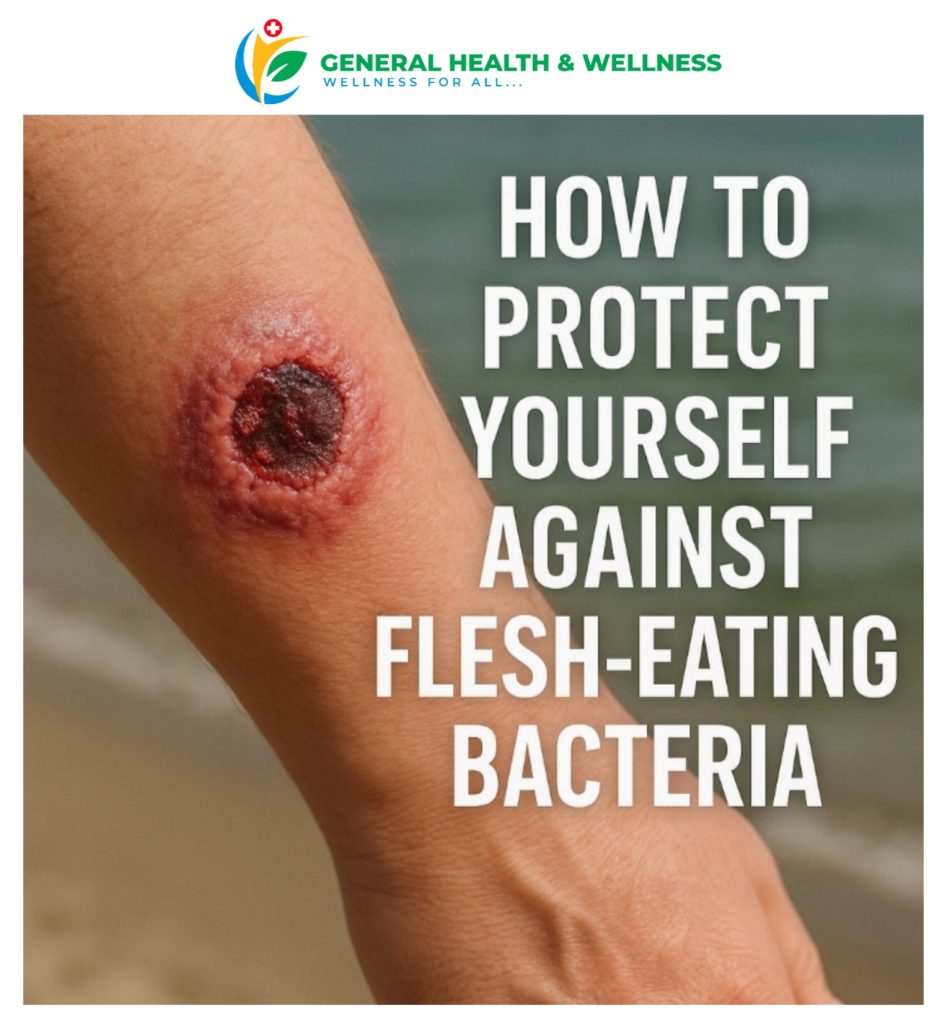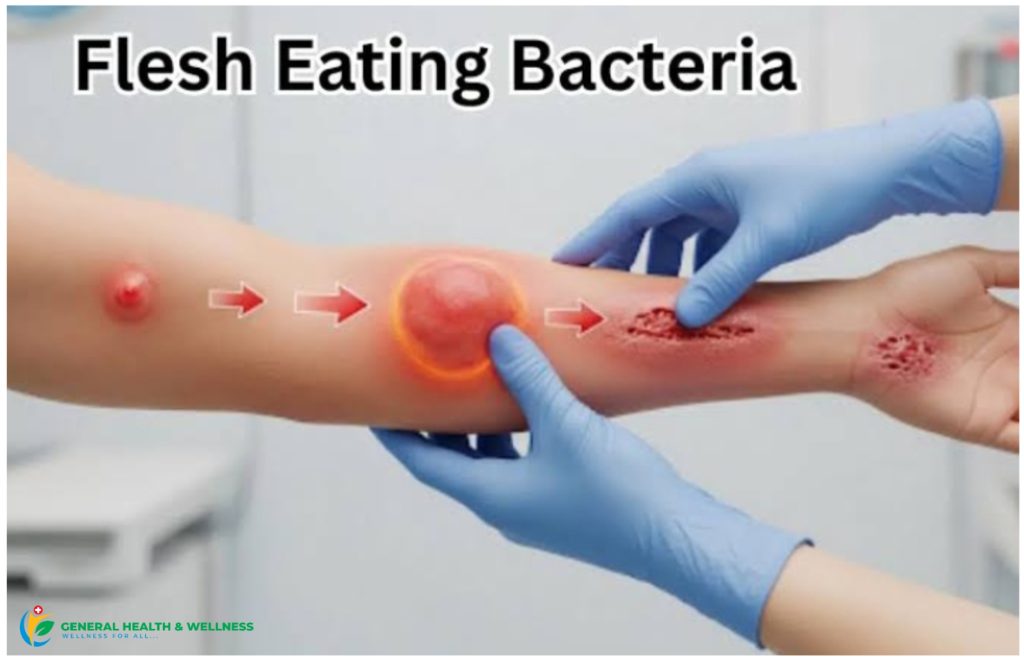What Are “Flesh-Eating” Bacteria?
Necrotizing fasciitis commonly known as flesh-eating disease, is a rare but extremely serious bacterial infection that destroys soft tissue rapidly. Common culprits include Group A Streptococcus (GAS) and occasionally other bacteria like Staph. aureus, E. coli, and various Vibrio species (Wikipedia, UPMC | Life Changing Medicine).
Symptoms of Flesh-Eating Bacteria
- Sudden intense pain around a wound that feels disproportionate to its appearance
- Rapidly spreading red, swollen, or purplish skin (Wikipedia, nhs.uk, Health and Human Services North Dakota)
- Later signs: blisters, bullae, skin discoloration (purple/black), tissue gas (“popping” under skin), fever, fatigue, vomiting, or shock (Wikipedia, UPMC | Life Changing Medicine, nhs.uk).
Treatment of Necrotizing Fasciitis
- Immediate surgical debridement of dead tissue is critical, and often repeated—to control spread (CDC, NCBI, MyHealth Alberta, Cleveland Clinic).
- Broad-spectrum IV antibiotics, later tailored to specific bacteria, are given commonly penicillin + clindamycin for Group A strep, vancomycin, clindamycin, gentamicin, fluoroquinolones, or carbapenems depending on culture results (CDC, Wikipedia).
- Supportive ICU care for organ support, possible amputation, plus hyperbaric oxygen therapy or IV immunoglobulin in select cases (MyHealth Alberta, NCBI, ColumbiaDoctors).
- Without timely treatment, mortality is essentially 100%; with aggressive care, still approximately 25–35% fatality (Wikipedia, Cleveland Clinic).
Is Social Media Harming Your Mental Health, Without You Knowing?
Flesh-Eating Bacteria in Florida: Vibrio vulnificus
In Florida, the bacterium Vibrio vulnificus, found in warm, brackish coastal waters, is a known cause of necrotizing infections and septicemia (The Washington Post, The Times of India, Florida Department of Health).
- 2025 Data: Florida has reported 11 cases and 4 deaths so far, with a wider Gulf Coast average of 150–200 cases annually (The Washington Post, Florida Department of Health).
- Transmission: Through open wounds exposed to contaminated water, especially from May to October or consuming undercooked/raw seafood, particularly oysters (The Washington Post, Florida Department of Health).
- Symptoms: Include vomiting, diarrhea, abdominal pain, fever, skin lesions, blistering, septic shock, and rapid progression within days (The Washington Post, The Times of India).
- High-risk groups include those with chronic liver disease, weakened immunity, or reduced stomach acid (The Washington Post, The Times of India).
- Treatment protocols recommend early IV antibiotics such as doxycycline plus ceftazidime, or a combination of third-generation cephalosporin and tetracycline (Wikipedia).
- Prevention Tips: Avoid seawater if you have open wounds, thoroughly cook seafood (boil or steam shellfish, fry shucked oysters), and take extra precautions post-storm or hurricane (The Washington Post, The Times of India, Florida Department of Health).
Summary Table
| Topic | Key Points |
|---|---|
| Definition | Necrotizing fasciitis is a rapidly progressing, life-threatening soft tissue infection. |
| Symptoms | Excessive pain, redness/purple discoloration, blisters, fever, shock. |
| Treatment | Emergency surgical removal of dead tissue; IV antibiotics; supportive ICU care; possible amputation. |
| Florida-Specific | Vibrio vulnificus thrives in warm coastal waters, causes severe skin/blood infections; prevention focused on wound care and seafood safety. |
External Links to Read More
- Cleveland Clinic: Necrotizing Fasciitis overview and treatment recommendations (Cleveland Clinic)
- UPMC: Overview of causes, symptoms, diagnosis, and treatment (UPMC | Life Changing Medicine)
- CDC (Type II NF guidance): Aggressive surgery and antibiotic protocols (CDC)
- Florida Health Department: Vibrio vulnificus info, case stats, and prevention guidelines (Florida Department of Health)
- Wikipedia on Vibrio vulnificus: Treatment insights and antibiotic strategies (Wikipedia)





